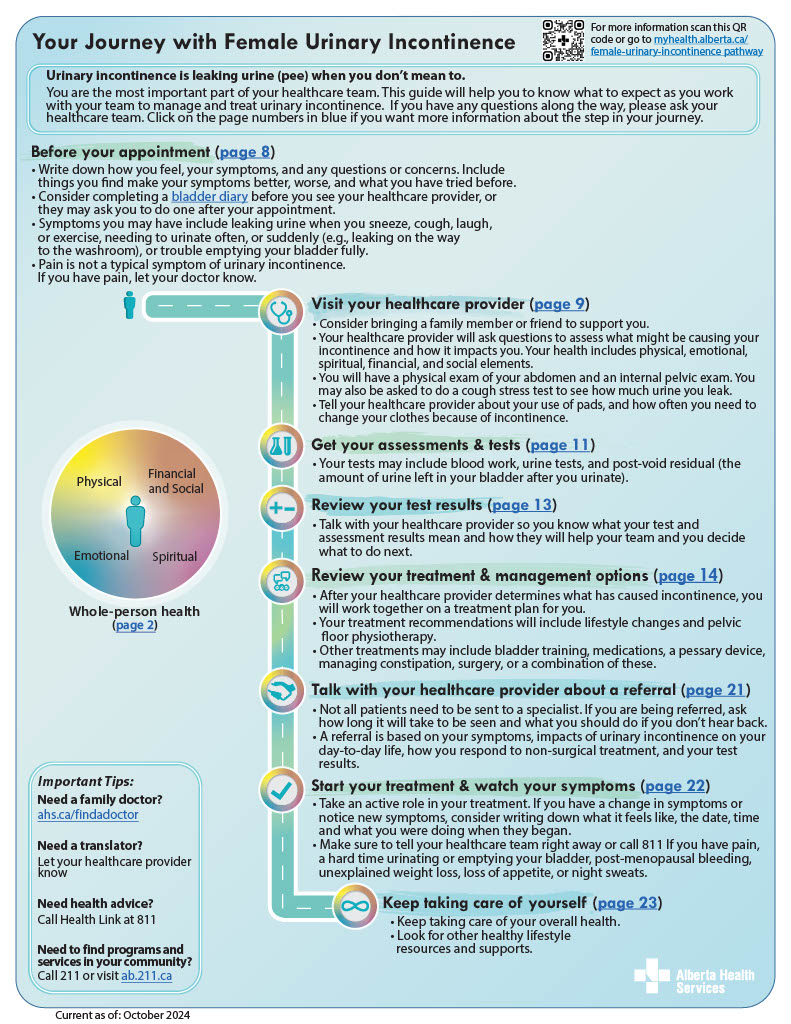This guide will help you know what to expect as you work with your healthcare team to manage and treat urinary incontinence.
You will have your own unique journey with urinary incontinence. How you move through your journey, the number of visits with your healthcare team, the steps you will take, and the order you take them in will depend on your needs. You will make decisions in partnership with your healthcare team. Always follow your healthcare team's advice.
What is urinary incontinence?
Urinary incontinence is leaking urine (pee) when you don't mean to. It's a common condition that can affect your daily life.
Urinary incontinence is not a disease—it is a symptom of something else. It can almost always be treated or managed successfully.
There are different types of urinary incontinence. Each type has different causes and treatments. Symptom you may have include:
- leaking urine when you sneeze, cough, laugh, or exercise
- needing to urinate often or suddenly
- trouble emptying your bladder fully
Pain is not a typical symptom of urinary incontinence. If you have pain, tell your healthcare provider.
Whole-person health
The whole-person health approach will help you and your healthcare team better manage your health condition.
Whole-person health draws from the teachings of the medicine wheel. It means thinking about all parts of your health and wellness:
-
 physical
physical
- financial and social
- spiritual
- emotional
These parts are all connected and impact each other. It's important to be aware of your personal needs in each part and to share that information with your healthcare team. Your healthcare team needs to understand who you are and what matters to you.
Support and resources
- If you need a family doctor, visit Alberta Health Services:
Find a doctor.
- If you need a translator, let your healthcare provider know.
- If you need health advice any time, day or night, call Health Link at 811.
- If you need to find programs and services in your community, call or text 211 or visit
211 Alberta.
For more information about urinary incontinence, see:
Female Urinary Incontinence Pathway

Download or print the
full patient pathway (PDF) and
summary (one-page PDF) to learn more about how to manage and treat female urinary incontinence.
Patient Pathway  Summary
Summary 
